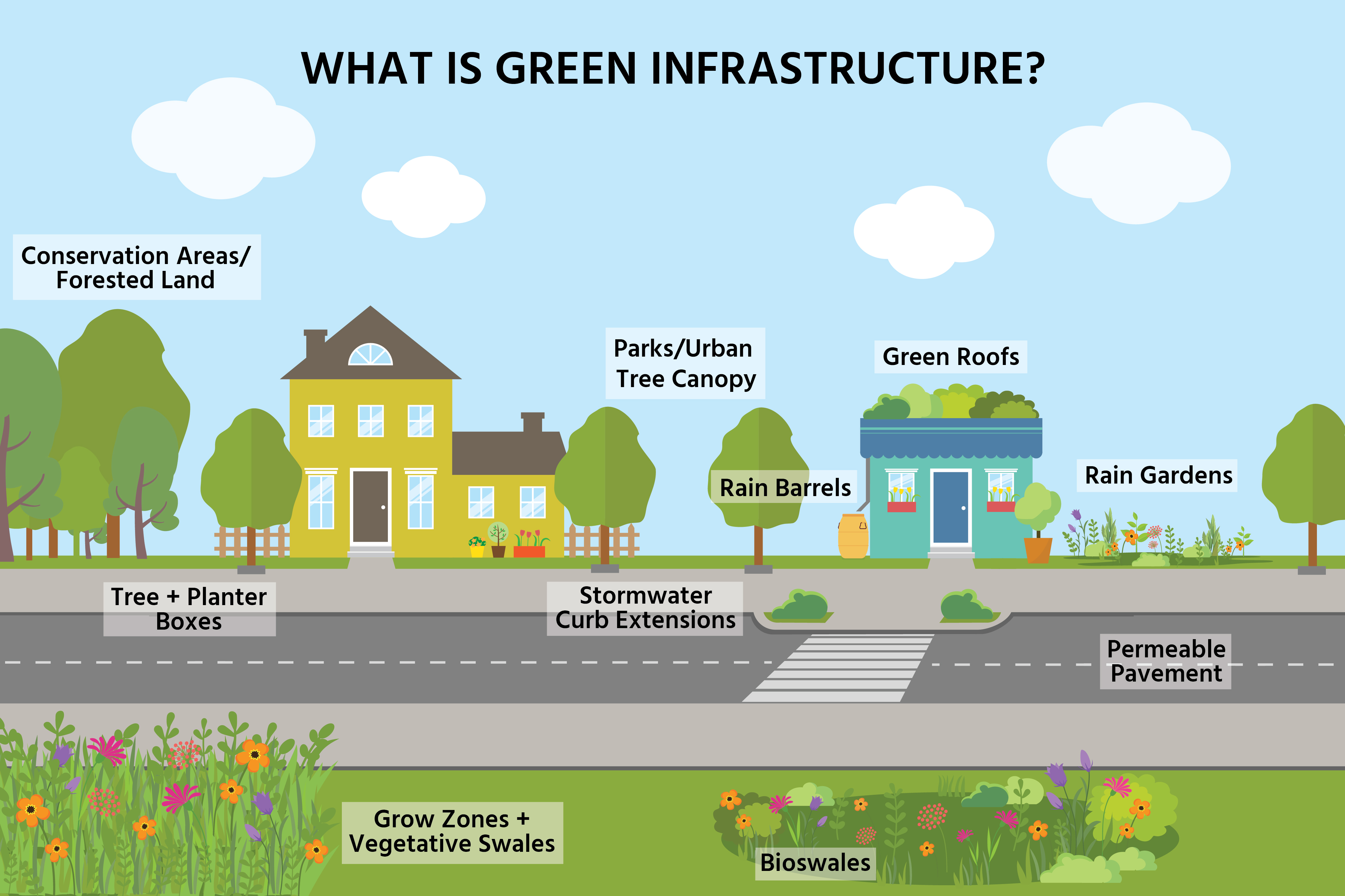
Green Infrastructure
BREC’S COMMITMENT TO RESILIENCY AND SUSTAINABLE STORMWATER MANAGEMENT
The great flood of 2016 was a wake-up call for East Baton Rouge Parish and our region. A number of BREC parks took on and held stormwater through their open space, or green infrastructure – especially our larger community parks like Greenwood, Howell, Airline Highway, Burbank Soccer Complex, and Central Sports Park, to name a few. Howell Park’s 60-year-old recreation center received between 6 to 7 feet of water and was basically destroyed. In the aftermath, BREC recognized how much stormwater our parks held – nearly 10 billion gallons in the 2016 flood – that’s enough to fill Tiger Stadium 71 times. All of this floodwater would have otherwise gone into the homes and businesses in the surrounding areas, creating even greater devastation.
BREC is committed to providing essential outdoor spaces for our Parish residents to live, play and interact with neighbors. The 6,600 acres of parks that BREC manages contributes to the conservation, health and wellness, and social equity of our local community. As an agency, we are committed to ensuring that BREC properties offer the maximum benefits possible to residents not just recreationally, but from an ecosystem services standpoint. Our parks have the capacity to naturally soak up and hold stormwater runoff, reduce flooding, reduce urban city temperatures, sequester carbon to clean our air, and much more. We can increase the capacity of our parks to provide these benefits through sustainable resilience planning and design. Incorporating green infrastructure elements into our parks protects these existing natural lands while providing valuable ecosystem services to the public as land use changes throughout the Parish.
WHAT IS GREEN INFRASTRUCTURE?
Green infrastructure is an interconnected network of open green spaces and parks that conserves natural ecosystem values and functions and sustains clean air and water. Green infrastructure also includes a nature-based approach to stormwater management that protects, restores, or mimics the natural water cycle. There are many green infrastructure types and strategies such as bioswales, native plantings, green roofs, permeable pavement, rain gardens, and rain barrels. However, they are all designed with the common purpose to slow down, store and/or filter stormwater.

The idea behind green infrastructure is to mimic the way that our natural ecosystems such as wetlands, forests, and prairies naturally manage rainwater. There are typically 6 ways that our natural ecosystems do this including:
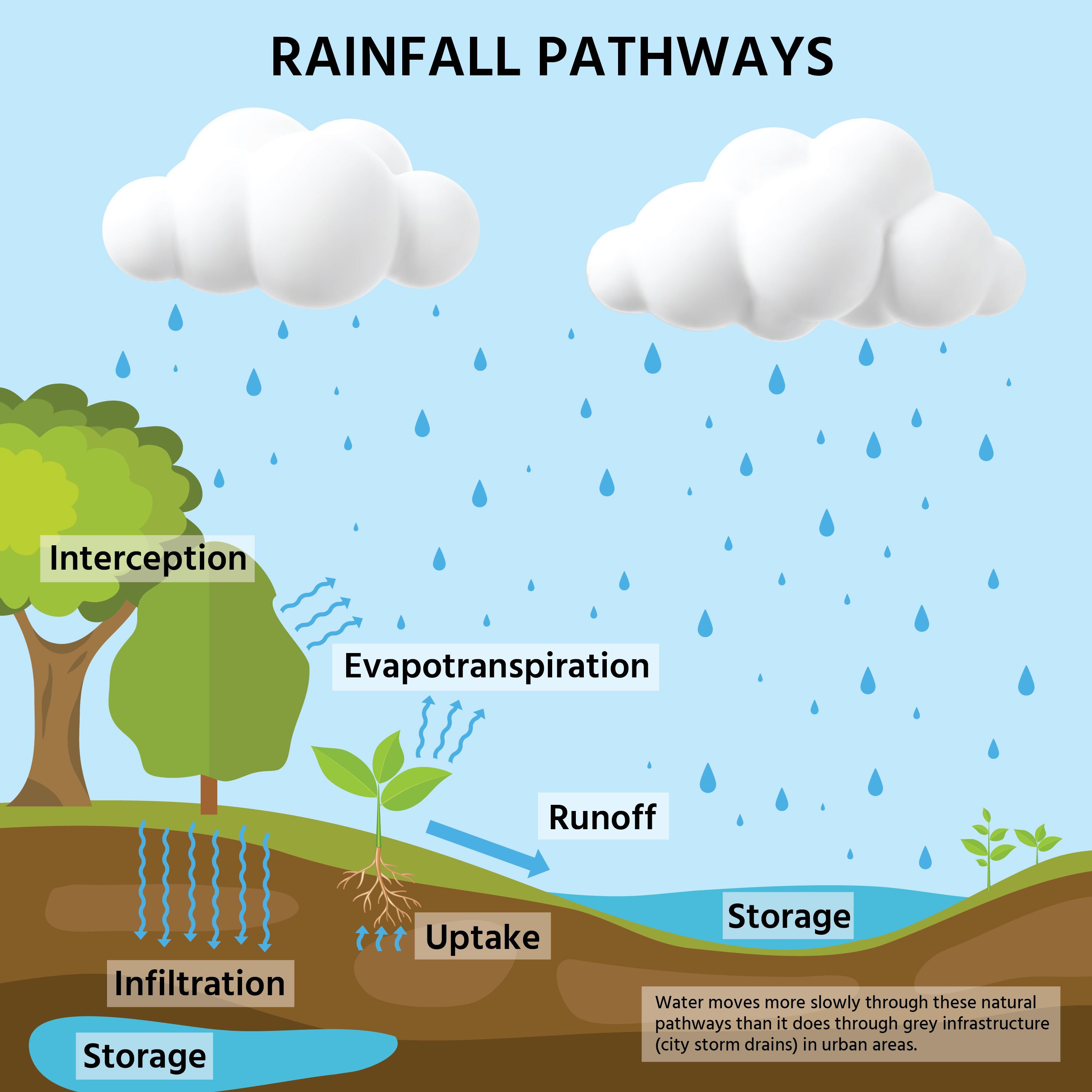
- Infiltration - The process by which water soaks into the soil
- Storage - The ways in which water is held or locked up in its present state for a period of time. This includes short-term storage in rivers, creeks, bayous, ponds, lakes, and wetlands; or long-term storage on deep groundwater reservoirs or aquifers.
- Evapotranspiration - Water that is released as a gas or vapor either through evaporation or via plant leaves through a process called transpiration.
- Interception - The process by which rainfall is caught and held by leaves, branches, or other plant matter.
- Runoff - Stormwater that lands on already saturated soil or ground material that is impermeable, shedding the stormwater overland to the lowest location.
- Uptake – The process by which plant roots transport water and nutrients from the soil up into the plant. The amount a plant uptakes varies depending on the depth of the roots and size of the plant (trees range from 10-150 gallons daily).
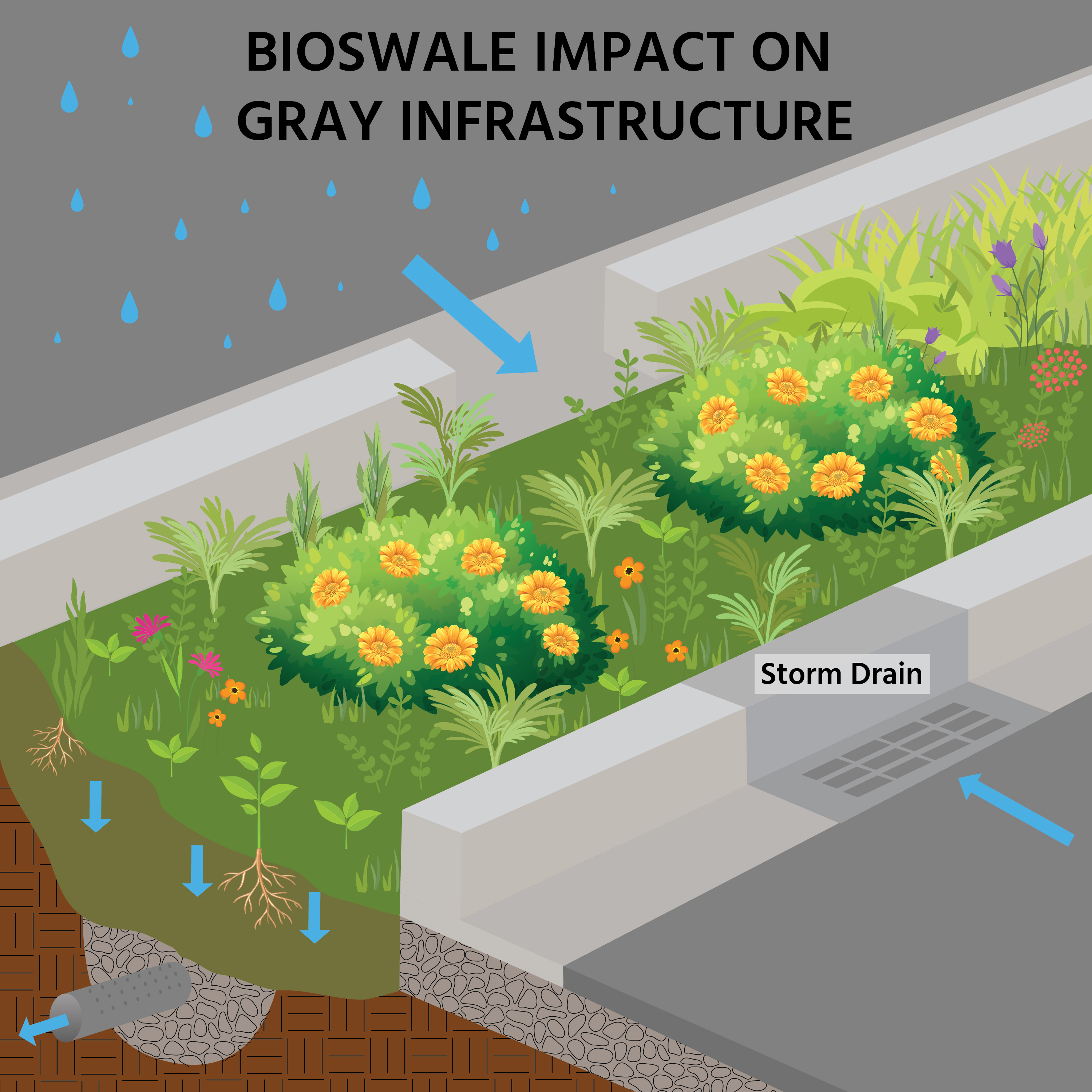
A city’s gray infrastructure, such as drainage ditches, curbs, gutters, storm drains, pipes, culverts, canals, and mechanical pumping stations, are designed to direct and remove stormwater runoff from paved surfaces as quickly as possible. Alternatively, built green infrastructure can reduce the impact on gray infrastructure by incorporating designs that intercept runoff before it reaches paved surfaces while also filtering pollutants and sediments from the water in the process. Reducing impacts to gray infrastructure not only reduces flooding potential, but also reduces maintenance costs and construction costs of new gray infrastructure. There are many more benefits to green infrastructure which are described below.
WHY IS GREEN INFRASTRUCTURE IMPORTANT?
Green infrastructure has many uses and benefits to the community. We highlight a few of them below. The types of green infrastructure elements and the benefits they provide, far exceed this list.
Flood Abatement/Stormwater Management
Recent years have shown that it is going to take more than the standard city sewer system and gray infrastructure to manage stormwater in the Parish. As storm severity increases and climate change impacts weather patterns, we must adapt to changing conditions. According to the EPA, risk of flooding is only going to increase in the future as the average 100-year floodplain is projected to increase 45 percent by the year 2100. Currently, flood damages cost the United States $2 billion annually not to mention the loss to local economy and the impact it has on people’s lives.
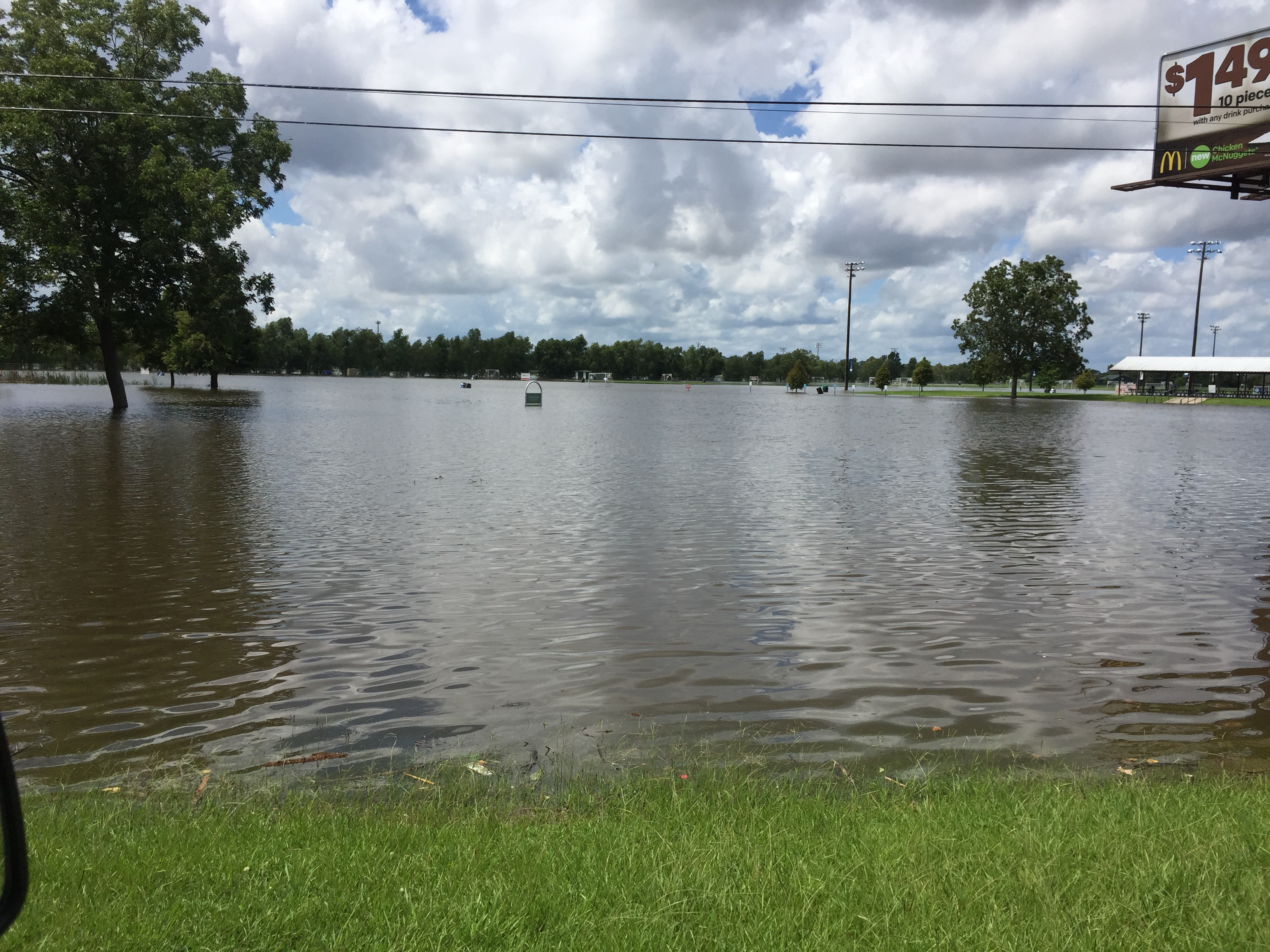
Flooding occurs when rainwater and stormwater runoff overwhelms the capacity of urban drainage systems or when the flow of local rivers and waterways exceeds the capacity of their channels and overtop the banks. In the great flood of 2016, stormwater not only filled the Amite and Comite Rivers, but also their many tributaries, including bayous, creeks, streams, canals, and culverts. As these two rivers filled with water, the ability of their tributaries to convey stormwater flowing directly into them was greatly reduced. As such, the water from the Amite and Comite backed up, causing flooding upstream, or “backwater flooding”. Backwater flooding was the main cause of flooding in East Baton Rouge Parish during the 2016 event. Many of these tributaries flow along, through, or are near BREC Parks such as Wards Creek, Dawson Creek, Bayou Manchac, Cypress Bayou, Hurricane Creek, Monte Sano Bayou, Jones Creek, and others. Green infrastructure in BREC Parks can help to reduce backwater flooding by increasing capacity and providing another outlet for rainwater to go. By increasing the storage capacity available and preventing runoff from leaving parkland, BREC parks help to prevent it from entering your home.
[ Photo Credit: Google Earth ]
Green infrastructure increases a city’s stormwater capacity by absorbing rainfall in a variety of ways. Permeable pavement reduces the amount of impermeable surfaces and provides rainwater a place to go instead of city storm drains, green roofs prevent the rainwater from ever hitting the ground, either through storage on top of the building, or in nearby storage tanks. Bioswales slow water down and removes it from surrounding impermeable surfaces. Even undeveloped parks like nature reserves or Grow Zones reduce stormwater runoff by using plants to absorb water and store it on-site in wetlands and forests before it recharges back into the water table. Green infrastructure is designed to augment the city's gray infrastructure and as such, reduce the need for costly maintenance and construction of new gray infrastructure and to reduce costs associated with flooding and disaster relief.
Erosion Control
Green infrastructure reduces erosion through two main mechanisms: slowing stormwater runoff down, and and providing a strong and deep root system which reduces the potential for soil to be caried off.
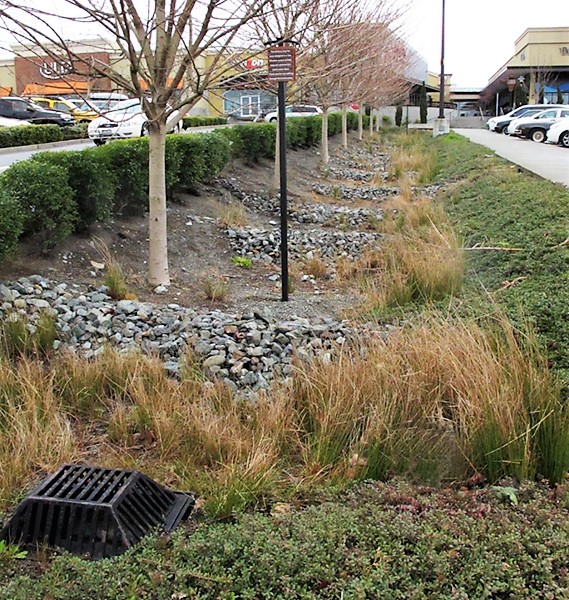
Photo Credit: MLSmith
Green infrastructure is designed to slow water down or remove it from the flow. For instance, green roofs and rain barrels remove the rainwater immediately and store it before it has a chance to hit the ground, containing runoff from building and structures. The less water in the flow, the less damage it typically does while moving over the ground surface, reducing erosion potential. Additionally, green infrastructure typically contains structures designed to slow water down as it enters a system. These inflow devices are essentially splash pads that dissipate and break up the flow, causing it to slow down or take multiple routes to enter. This can be as simple as adding a large rock or small pile of riprap. If the green infrastructure has an outflow or overflow device, it will also typically include something which requires exiting water to slow down or take multiple paths to reduce erosion potential.
However, green infrastructure does not always have built structures to slow water down, for instance a Grow Zone reduces stormwater erosion with nothing but plants. How does it work? Native grasses and wildflowers have much deeper, denser, and well-developed root systems compared to non-native turf grasses found in most yards or landscaped areas. Plant roots not only hold the soil in place but also aid in absorbing stormwater that enters the ground, and the tops of plants create a rough surface which slows surface water down. As an added bonus, plants remove harmful nutrients and chemicals from water, increasing water quality before it re-enters the water table.
Increase Biodiversity
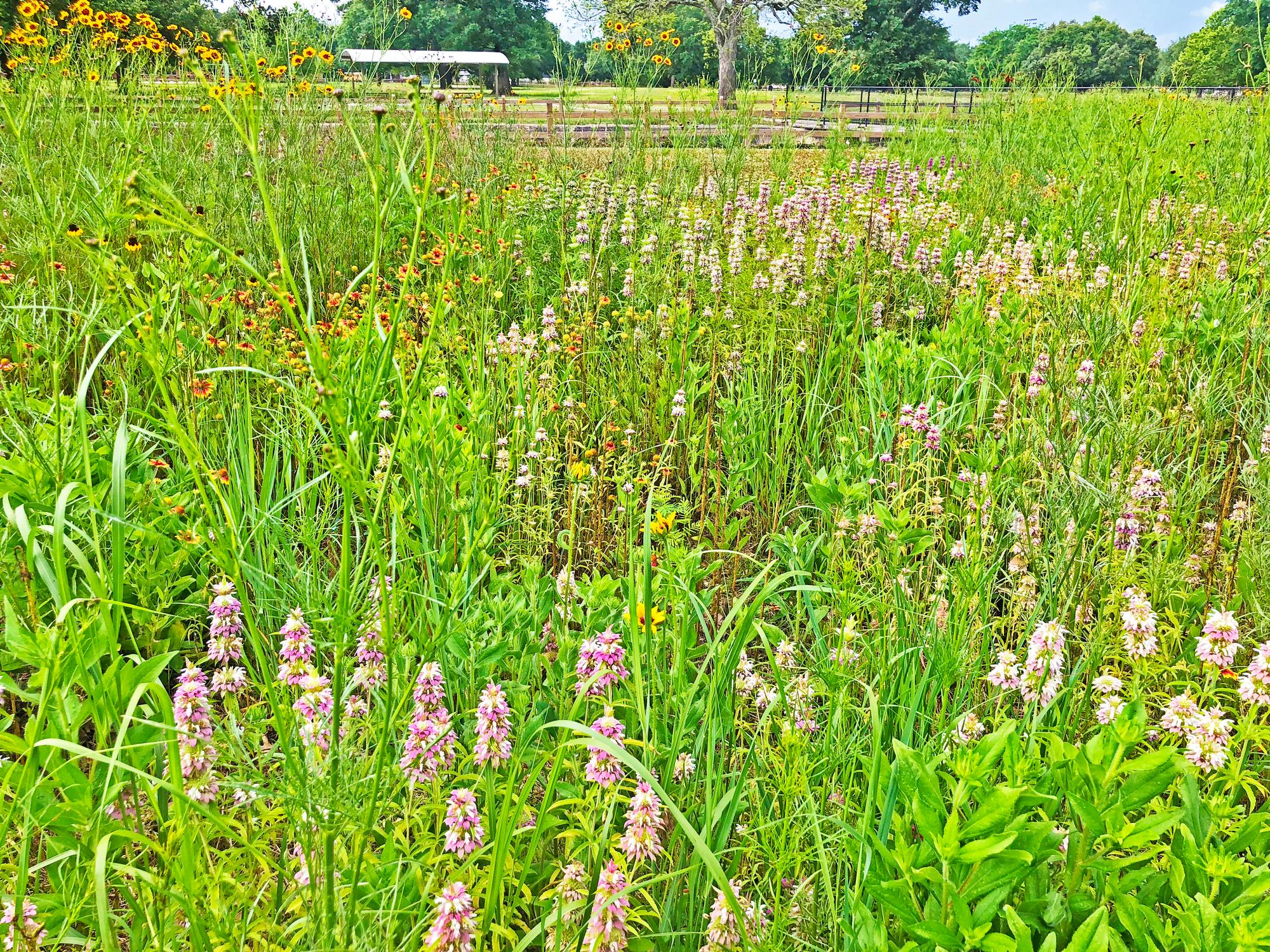
Green infrastructure provides a unique opportunity to provide a utilitarian product and service to the community through a naturally occurring source – plants. East Baton Rouge Parish was once a diverse landscape of wetlands, prairies and forests before human settlements moved in and cleared it to create the communities and neighborhoods we know today. This reduced the diversity of plants, insects, and wildlife in the area. Lower biodiversity means that our habitats are now less resilient to natural disasters, disease, and other issues both natural and man-made. For instance, if a disease moves through a forest with low diversity and kills every tree of 1-2 species, insects and birds in the area could have 50% or more of their food and shelter sources removed. However, if the same disease moves through a forest with high diversity, it may only remove 10-20% of food and shelter sources making that community more resilient.
Green infrastructure is designed to mimic natural habitats. As such, native plants are utilized to reduce maintenance and ensure higher survivability. By using a diverse pallet of native plants, more native pollinators and birds, (the foundation of a healthy ecosystem) are supported in that particular area. Additionally, providing shelter and nesting sites for wildlife like rabbits, birds, salamanders, and frogs, increases the diversity of wildlife supported in the area, again creating a stronger ecosystem. Installing native species of plants also ensures that native seeds are spread in the area as opposed to harmful and aggressive non-native invasive species which can take over areas – ultimately reducing biodiversity.
TYPES OF GREEN INFRASTRUCTURE IN THE BREC SYSTEM
Bioswales
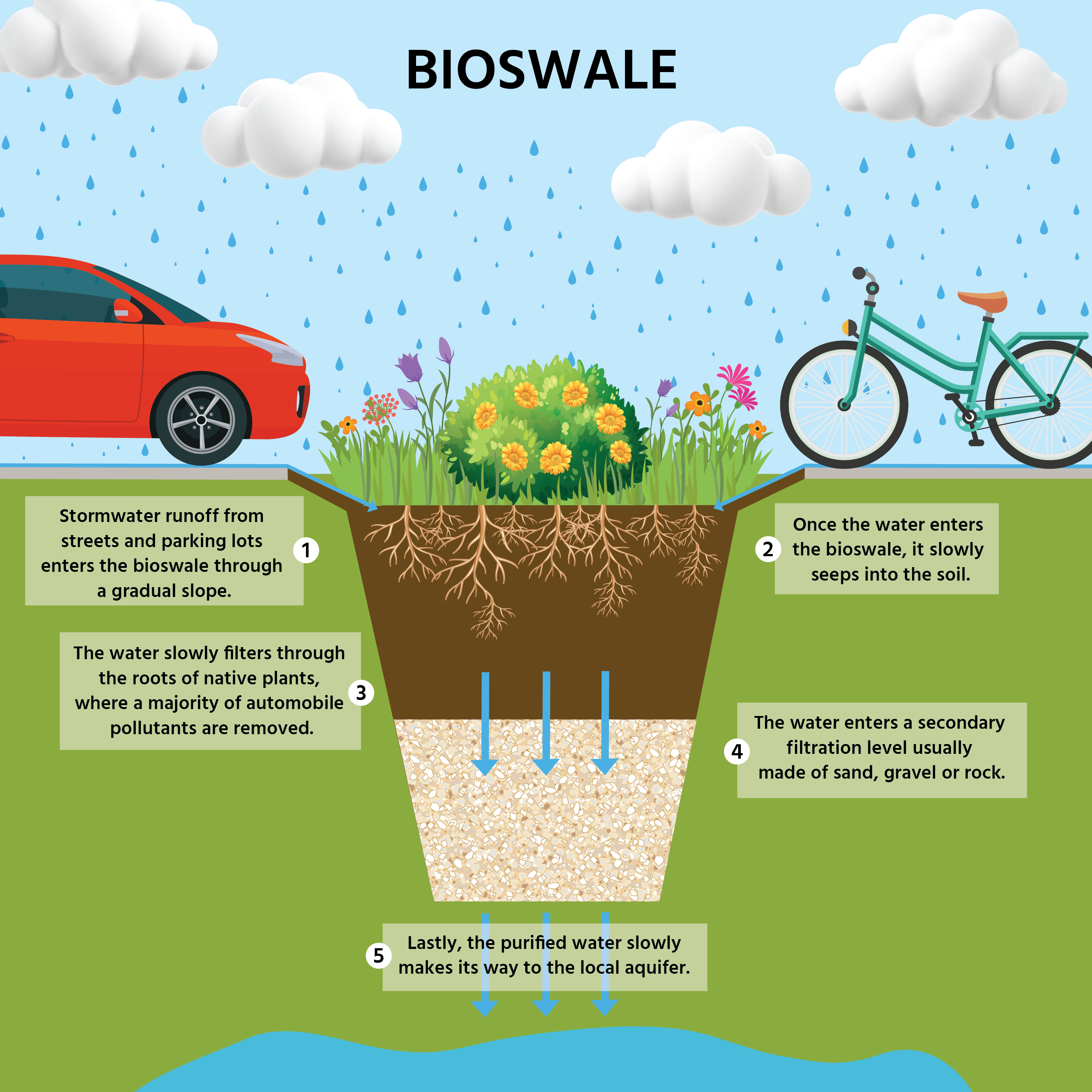
A bioswale is a type of bioretention that receives stormwater from a small area like a road or parking lot. Once water enters the bioswale from surrounding impermeable surfaces, it is slowed down, and filtered by planted vegetation. Bioswales are typically linear and are used along roads, sidewalks, and within parking lots.

Photo Credit: https://wiki.sustainabletechnologies.ca/wiki/Bioretention
Rain Gardens
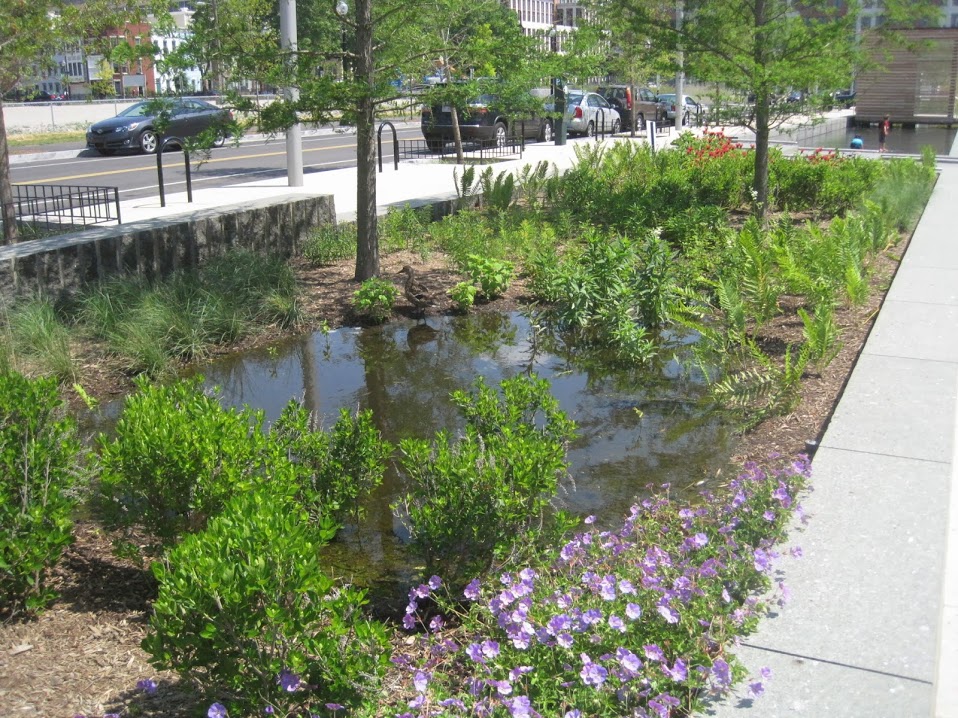
Photo Credit:https://wiki.sustainabletechnologies.ca/wiki/Bioretention
Similar to bioswales, rain gardens are a type of bioretention that use native vegetation to slow and absorb water. They often do not contain any type of subdrain or soil amendments and strictly use native water-loving plants to contain and filter the stormwater. They normally contain an overflow drainage system and are not restricted by size or shape. Although rain gardens don’t need to have a large surface area they can often absorb runoff from buildings 5 to 10 times their footprint. Rain gardens may not look any different than a regular garden, except for the types of plants they contain and are usually more recessed into the ground to hold water.
Native Plantings
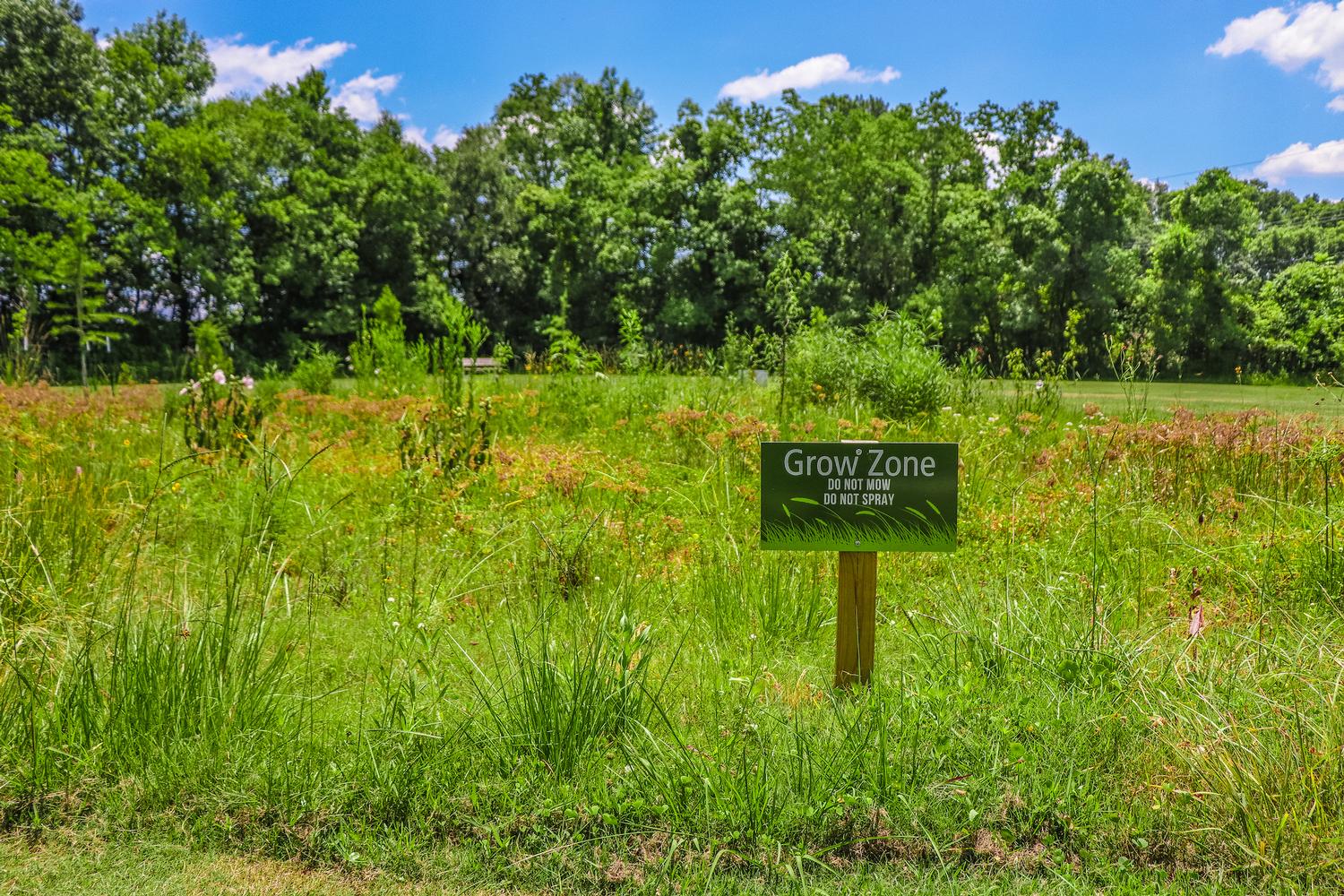
Native plantings are a type of bioretention and erosion control that utilizes native plants in the landscape to slow and filter water and hold native soils in place. Similar to rain gardens, they do not require specific sub-grade or drainage parameters. Because only native plants are used, they are more sustainable than some other types of landscaping and require less fertilizer to survive due to their longer and thicker root networks.
Grow Zones are a type of native planting that mimics a native prairie and typically cover larger areas (1-10 acres). Grow zones are usually seeded as opposed to planted and have the added benefit of reducing mowing costs and emissions in BREC parks.
Permeable Pavement
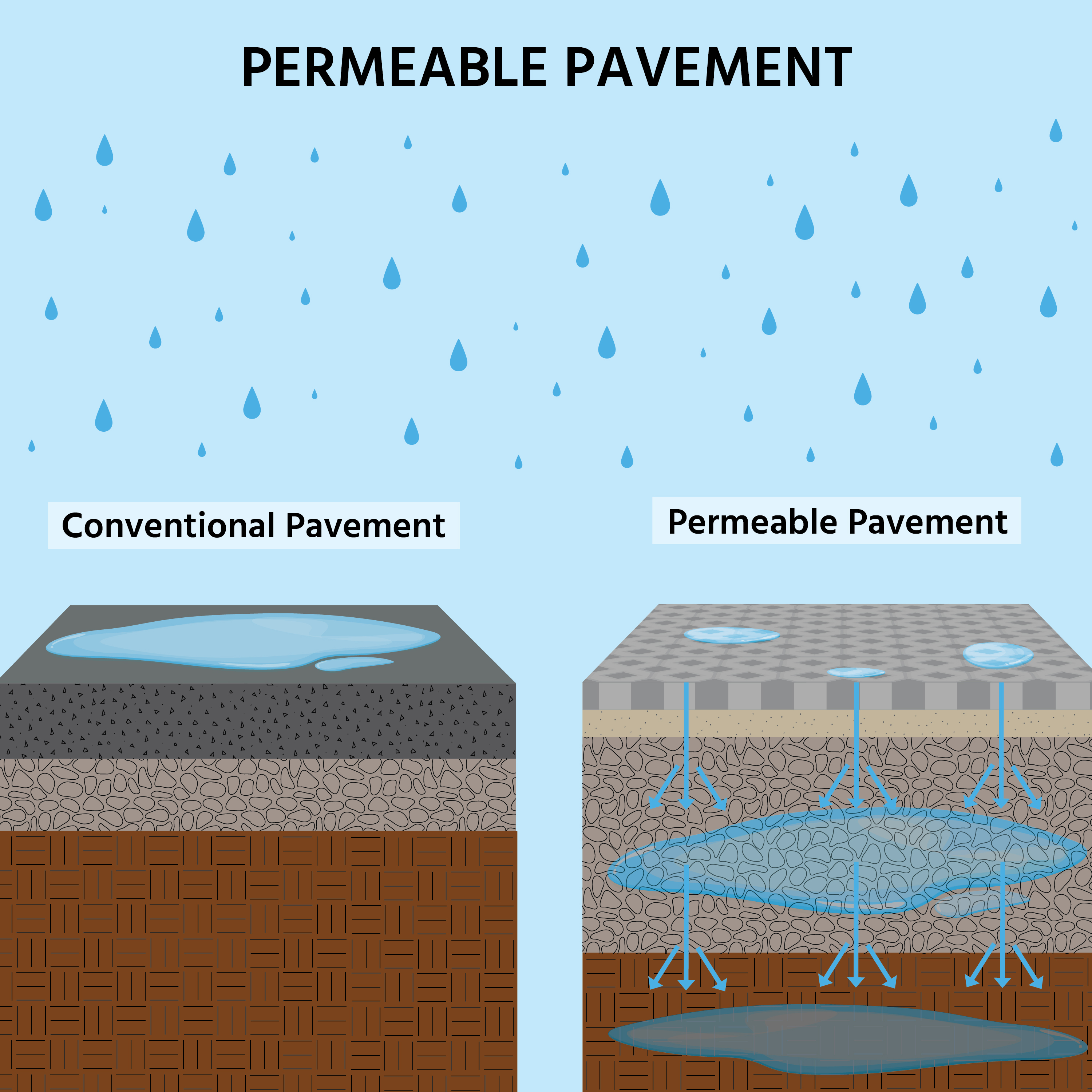
Permeable pavements are similar to conventional pavement as they provide structural support for vehicle, bicycle, and pedestrian traffic but have the added benefit of allowing water to infiltrate through the pavement surface, and into an underlying aggregate reservoir. Permeable pavements can be made of open pore unit pavers with joints that allow water infiltration, or special mix designs of porous concrete or asphalt. They are designed to collect and store water that would normally be shed into a subsurface storm drainage system by an impermeable surface such as parking lot, road, or building. Permeable pavement reduces the load of stormwater in our conventional subsurface stormwater systems that outfall into our rivers and canals.
Permeable pavement can take on many different forms including:

Photo Credit: United States Geological Survey
Green Roof
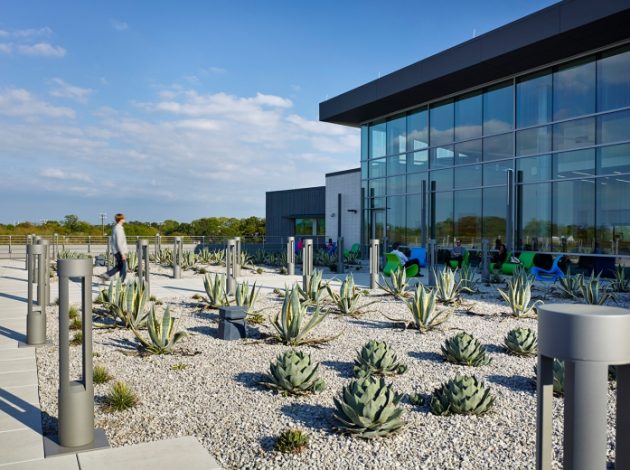
A green roof is a roof designed with a vegetative layer planted on top of a flat roof. The vegetation grows in a specially designed soil mix which sits on top of a drainage layer or membrane. Green roofs are designed to capture and soak up stormwater that would typically fall on a building, then travel through its gutter system which sheds the runoff from the roof rapidly. Instead, stormwater is captured for a short time, is filtered, and then either evaporates, or drains off the building after the rain event has passed at which time, the gray infrastructure can better handle the load.
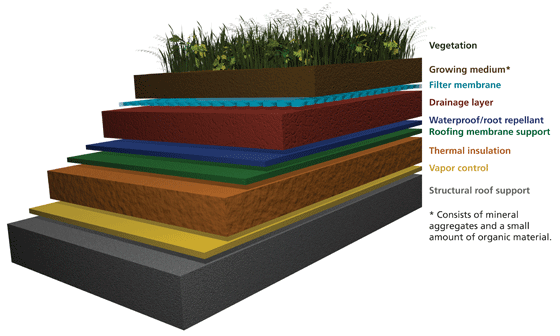
Rain Barrels
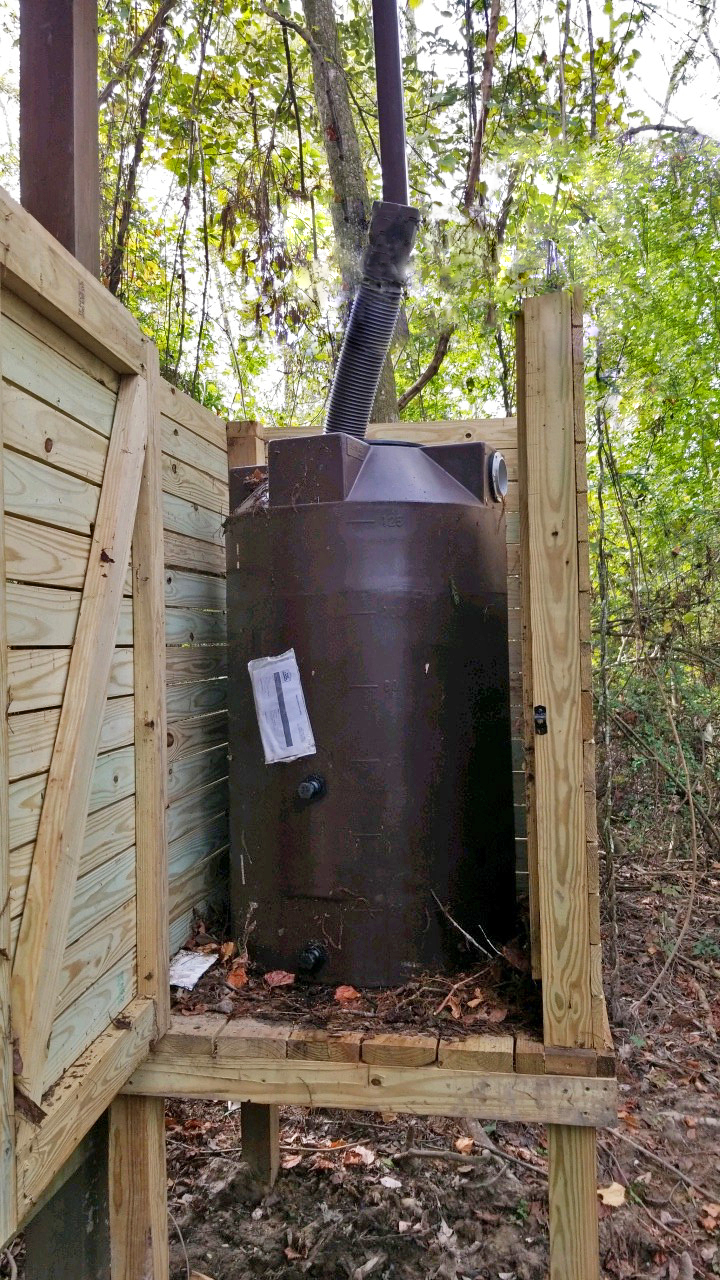
Rain barrels and cisterns are a form of rainwater harvesting that collects water from a surface, such as a roof, for re-use within a building, or for landscaping or gardening. By capturing stormwater in the barrel or cistern, it removes it from the surrounding impervious surfaces and gray infrastructure, ultimately reducing the impact to gray infrastructure. Rain barrels are typically 10-100 gallons and can be comprised of a single unit or be strung together to increase capacity. Within the BREC system, we use rain barrels at BREC’s Bluebonnet Swamp Nature Center to collect rainwater from the Swamp Pavilion and use it to pressure wash the pavilion deck and boardwalks.
Wetland/Ecosystem Restoration
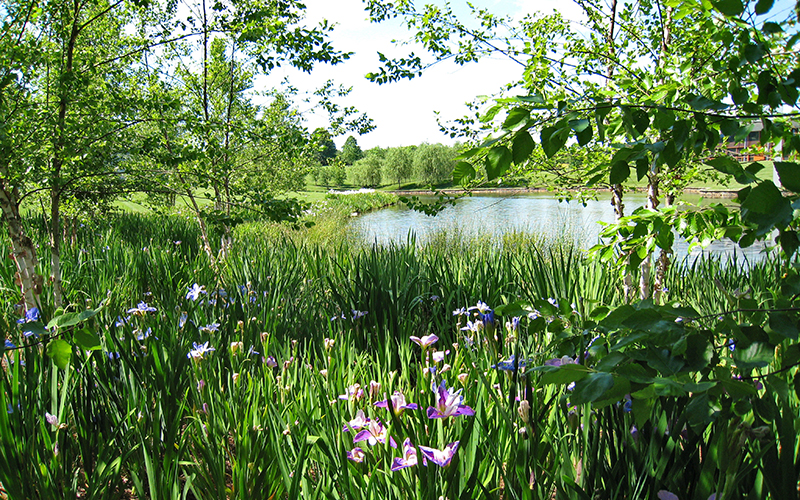
Photo Credit: the American Society of Landscape Architects
Constructed wetlands are man-made wetlands designed to mimic the function of natural wetlands to capture stormwater, reduce nutrient loads, and create diverse wildlife habitats. According to the EPA, 1 acre of wetland can store 1 – 1.5 million gallons of floodwater. Sometimes this form of green infrastructure is used where historically wetlands occurred to re-establish the habitat or in locations where they would not occur naturally to aid in drainage or to help create a buffer or transition between ecosystems. Constructed wetlands can remain saturated year-round or may go through wet and dry cycles and a variety of native plants are chosen for specific performance measures. Constructed wetlands are planned in several future projects including BREC’s Greenwood Community Park Cypress Bayou Watershed Project, Howell Community Park, the new Airline Highway Community Park, and BREC’s City Park Lake, as part of the University Lakes Project.
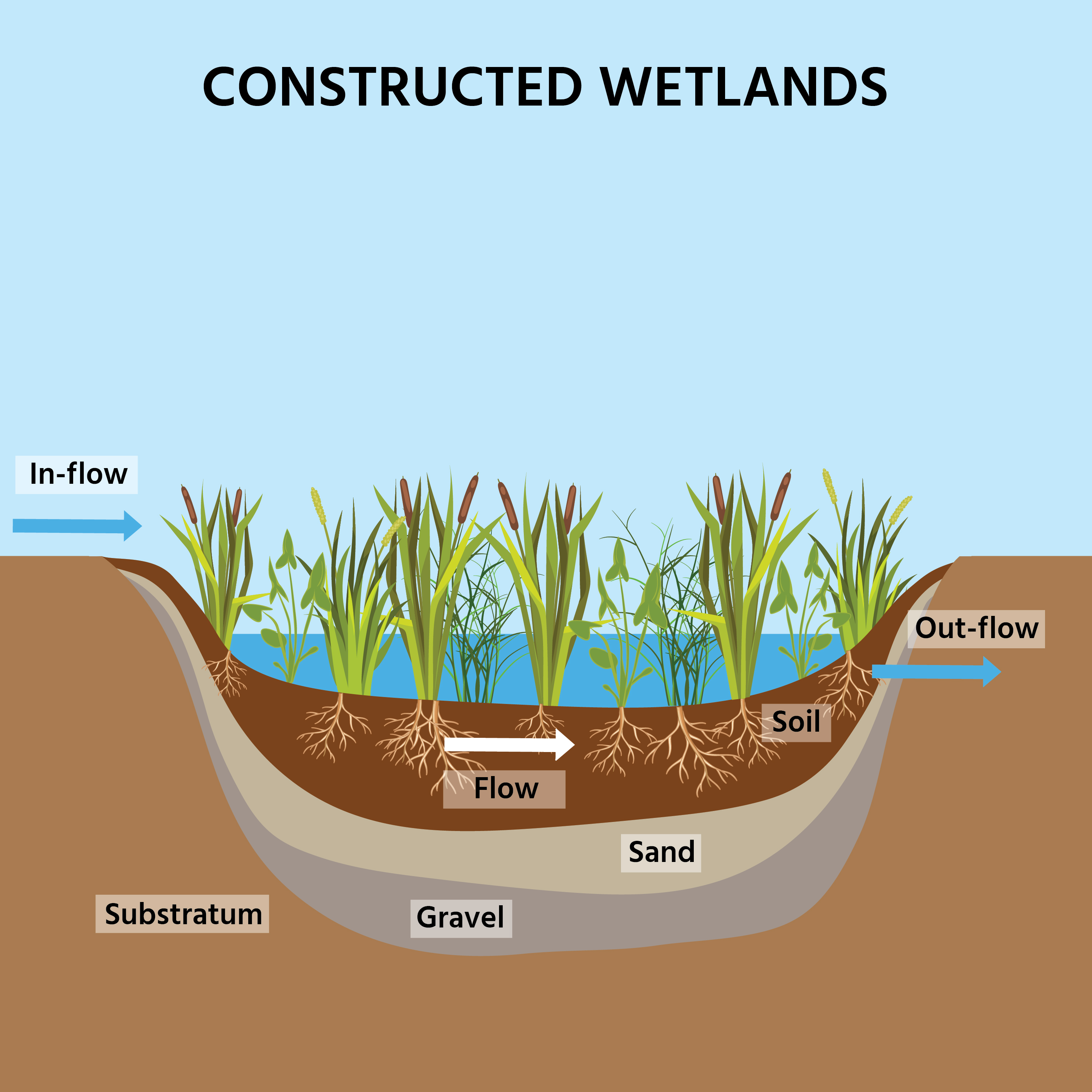
WHAT CAN YOU DO?
We all have a role to play in creating a greener, more sustainable community in EBR Parish. Here are a few things that you can do to help:
- Plant native plants in your backyard
- Clean out your storm drain closest to your home
- Educate yourself about stormwater management so you can recognize areas we can improve
- Dispose of yard debris and waste properly so it does not clog storm drains
- Support local organizations and businesses that promote the use of green infrastructure and sustainable building and design
- Elect local officials that support the use of green infrastructure and resilience planning for EBR Parish
- Volunteer with an organization like BREC to actively help plant, weed or maintain green infrastructure in the Parish
- Educate others about stormwater management and the benefits of green infrastructure.
- Opt to transition your yard from non-native turf grasses or concrete to native plants with deep roots. Bonus….you don’t have mow them!
References